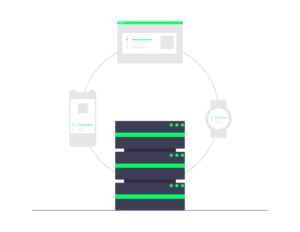About ALLEGRO ‘Agile ultra low energy secure networks’
 ALLEGRO aims at designing and validating a novel end-to-end sliceable, reliable, and secure architecture for next-generation optical networks, achieving high transmission/switching capacity
ALLEGRO aims at designing and validating a novel end-to-end sliceable, reliable, and secure architecture for next-generation optical networks, achieving high transmission/switching capacity
- with 10 Tb/s for optoelectronic devices and 1 Pbt/s for optical fiber systems
- low power consumption/cost
- with > 25% savings
- and secure infrastructures and data transfers.
The architecture relies on key enabling innovations:
- smart, coherent transceivers exploiting multi-band & multi-fiber technologies for P2P and P2MP applications, based on e.g., high-speed plasmonic modulators/photodetectors and programmable silicon photonic integrated waveguide meshes;
- loss-less, energy-efficient transparent photonic integrated optical switches, eliminating OEO conversions, e.g., with on-chip amplification in the O-band for datacom applications;
- a consistent approach to security, in terms of functional/ protocol architectures and communications, further improving QKD systems, enabling optical channel co-existence and researching on quantum-resistant (post-quantum) cryptography, developing systems based on physically unclonable functions; and
- a scalable AI/ML assisted control and orchestration system, responsible for autonomous networking, dynamic and constrained service provisioning, function placement and resource allocation, leveraging devices increasing programmability and overall network softwarization.
To achieve the target objectives and KPIs, ALLEGRO has defined a clear methodology ending in ambitious demonstrators. The consortium includes a good balance of industry and research/academia with know-how in complementary fields.
The results of ALLEGRO will be disseminated in leading conferences, events, and high-impact journals. They will have a concrete and measurable economic and social impact, contributing towards achieving key European objectives, reinforcing European leadership and digital sovereignty in the ongoing digital and green transition.
Project News
Allegro Project Update: Training Our Deep Reinforcement Learning Mechanism
Before deploying our DRL-powered distributed storage allocation system, we invested in an intensive training phase to ensure our agent’s efficiency and stability. 🎯 By carefully tuning the hyperparameters α (learning rate), β (latency weight), and γ (discount factor),...
Machine Learning Function Orchestrator (MLFO) in ALLEGRO
The ALLEGRO project introduces the MLFO, a dedicated orchestrator for managing distributed AI/ML pipelines across the network. Unlike traditional intent-based systems focused on single network entities, MLFO enables a global, scalable, and reconfigurable AI/ML...
AI/ML Agents in the ALLEGRO Project
In the ALLEGRO approach, AI/ML agents are designed as intelligent software entities responsible for managing and optimizing specific services. These agents are built with a modular architecture to ensure agility, security, and seamless integration. 🔍 Key Components:...
ALLEGRO Project: Transport Network Slicing for 5G & Beyond
As 5G services evolve and diversify, network slicing emerges as a foundational technology—enabling transport networks to deliver customized, on-demand, and performance-assured services across multiple domains and layers. In the ALLEGRO architecture, Transport Network...
ALLEGRO Project: Smart Orchestration for Multidomain Optical Networks
In today’s complex networking environments, efficient end-to-end service delivery demands multisegment and multidomain orchestration. Within the ALLEGRO project, we are pioneering a comprehensive framework to manage intent-based requests across multiple...
Dynamic Optical Line Control with the OMS Controller
In modern optical networks, real-time control and visibility of the Optical Multiplex Section (OMS) are crucial. Within the ALLEGRO architecture, the OMS Controller plays a pivotal role by managing amplifier operational settings and line performance between ROADMs. 🧠...
Automated Light path Deployment with LP-VE in ALLEGRO
As networks grow denser and more dynamic, automation becomes essential. In the Horizon Europe ALLEGRO project, we’ve developed the Lightpath Validation Engine (LP-VE) to enable fully automated, QoT-aware optical lightpath deployment using a Physical Layer Digital Twin...
Digital Twin as-a-Service in ALLEGRO: Enabling Smarter Optical Network Control
As part of the Horizon Europe ALLEGRO project, we’re redefining how optical networks are monitored, managed, and optimized — by integrating a Physical Layer Digital Twin (DT) as-a-Service into the network control architecture. 🔍 What is it?The DT is a real-time,...
Reconfigurable Optical Add/Drop Multiplexers (ROADMs) in ALLEGRO
In the ALLEGRO project, we’re pushing the boundaries of dynamic optical networking by advancing the modeling and understanding of disaggregated ROADMs—the core enablers of flexible, scalable, all-optical routing. 📡 What do ROADMs do?They add/drop and transparently...
Modeling Fiber Propagation in High-Capacity Optical Networks
In the ALLEGRO project, we're advancing how we understand and model fiber propagation for next-generation flexible, high-speed optical networks. 📡 The Challenge:While DSP-based receivers effectively compensate for linear impairments in fiber, nonlinear interference...
